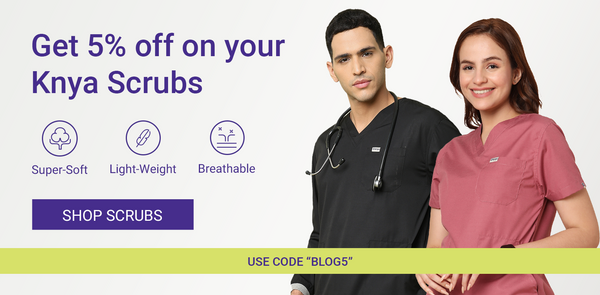White coat hypertension (WCH) is a phenomenon where a person's blood pressure readings are higher when measured in a medical setting compared to when measured at home. It’s named after the white coats typically worn by healthcare professionals, who may inadvertently cause stress or anxiety in patients. Though WCH doesn’t necessarily indicate a long-term health problem, it can be a precursor to actual hypertension and may lead to unnecessary worry or overdiagnosis.
What is White Coat Hypertension?
White coat hypertension is characterized by elevated blood pressure in a clinical setting, such as a doctor’s office, but normal or even low blood pressure at home or in other relaxing environments. The primary cause is anxiety triggered by the medical environment or the act of getting your blood pressure measured. The heightened stress and anticipation of a medical exam lead to temporary increases in blood pressure.
Causes of White Coat Hypertension
Several factors contribute to the occurrence of white coat hypertension. These include:
- Anxiety and Stress: Many people feel nervous or stressed when visiting the doctor, leading to a temporary rise in blood pressure. The fear of being diagnosed with a health problem or the discomfort of medical procedures can trigger anxiety.
- Doctor-Patient Relationship: Sometimes, the clinical setting or the doctor’s demeanor may contribute to stress. The pressure to “perform well” during the examination might lead to increased nervousness, even in those who don’t have a history of hypertension.
- Physical Discomfort: The cuff used to measure blood pressure can be uncomfortable or even painful. The act of having your blood pressure taken, especially if repeated several times, may increase stress and cause the body to release stress hormones that elevate blood pressure.
- Environmental Factors: The sterile, impersonal environment of a medical office may contribute to the stress response. The noise, bright lights, or even the presence of other patients can create an atmosphere that amplifies anxiety.
Discover the best lab coat designed for comfort and protection. Shop from here
Risks of White Coat Hypertension
While WCH isn’t typically harmful in and of itself, it carries certain risks. Here are some of the potential concerns:
- Misdiagnosis: White coat hypertension can lead to an inaccurate diagnosis of hypertension, which may result in unnecessary medication or lifestyle changes.
- Increased Anxiety: Repeated experiences of elevated blood pressure readings can cause ongoing anxiety, leading to more frequent instances of WCH. This cycle of stress and elevated readings may exacerbate the issue.
- Progression to Sustained Hypertension: Some studies suggest that white coat hypertension can be a risk factor for developing sustained hypertension in the future. Monitoring blood pressure over time is important for assessing whether WCH is merely a temporary condition or a precursor to more severe hypertension.
How to Reduce White Coat Hypertension?
While white coat hypertension is generally not a medical emergency, managing the condition is important for both short-term comfort and long-term health. Here are strategies to help reduce or eliminate the impact of WCH:
Practice Relaxation Techniques
The key to managing white coat hypertension lies in reducing stress and anxiety. Practicing relaxation techniques before and during medical appointments can help lower blood pressure. Some methods include:
- Deep Breathing: Take slow, deep breaths in through the nose and out through the mouth. This can help activate the body’s parasympathetic nervous system, which calms the body and reduces stress.
- Progressive Muscle Relaxation: This technique involves tensing and then relaxing each muscle group in your body. It helps release physical tension and ease nervousness.
- Visualization: Visualizing a peaceful scene or imagining yourself in a calm, happy place can help reduce feelings of anxiety. This mental escape can be a powerful tool in lowering stress.
Bring Someone Along
If you feel nervous about medical appointments, having a friend or family member accompany you can offer emotional support. This familiar presence can help ease feelings of anxiety and create a more comfortable environment. Additionally, your companion can help you stay relaxed and remind you to focus on calming techniques.
Practice Blood Pressure Measurement at Home
To get a more accurate picture of your blood pressure, consider taking measurements at home with a reliable, validated blood pressure monitor. This can help reduce the anxiety associated with doctor’s office visits. Regular home monitoring can also provide useful data for your healthcare provider to assess your blood pressure over time and reduce the likelihood of a misdiagnosis.
Be sure to follow these guidelines for accurate home measurements:
- Sit quietly for at least five minutes before taking the measurement.
- Ensure the cuff is positioned correctly, around your upper arm at heart level.
- Avoid caffeine or nicotine within 30 minutes of taking your blood pressure.
- Take readings at the same time each day for consistency.
Pre-Appointment Preparation
Prepare for your medical appointment by taking the time to relax and reduce any stress beforehand. Engage in activities that calm your mind, such as:
- Listening to soothing music
- Practicing yoga or gentle stretching
- Drinking a cup of herbal tea (avoid caffeinated beverages)
By ensuring your mind and body are relaxed before entering the doctor's office, you can reduce the likelihood of your blood pressure being elevated when measured.
Communicate with Your Healthcare Provider
Talking to your doctor about your white coat hypertension can be helpful. Being open about your anxiety or any concerns you have about medical visits can allow your doctor to adjust their approach to taking your blood pressure. Some healthcare providers are trained to recognize the signs of WCH and may take extra steps, such as allowing you to rest before taking the measurement or using a more comfortable, less invasive method of monitoring.
Regular Physical Activity
Physical activity is a key component of overall heart health and can help regulate blood pressure over time. Regular exercise, such as walking, jogging, or cycling, helps reduce stress and can have a calming effect. Aim for at least 30 minutes of moderate activity most days of the week to reap the benefits.
Maintain a Healthy Diet
A diet rich in fruits, vegetables, whole grains, and lean proteins can help support healthy blood pressure levels. Reducing sodium intake, limiting alcohol consumption, and avoiding processed foods are also important steps. Foods high in potassium, such as bananas and spinach, can help counteract the effects of sodium and lower blood pressure.
Consider Biofeedback
Biofeedback is a technique that teaches you to control physiological functions, such as heart rate and blood pressure, through relaxation and awareness. By using sensors attached to your body, you can learn how to adjust your stress responses and lower your blood pressure in real time. This technique can be especially useful for people with white coat hypertension who experience anxiety during doctor’s visits.
Ready to explore our amazing scrubs collection? Browse the best here





















































